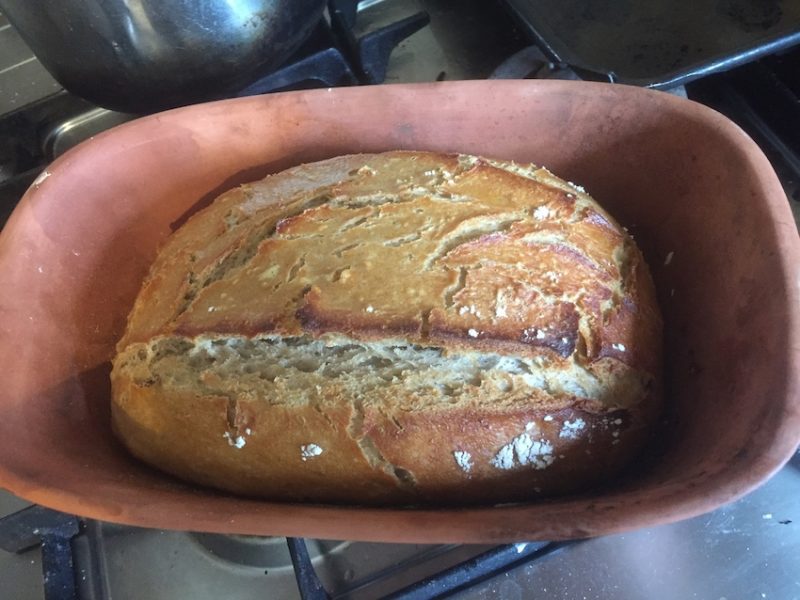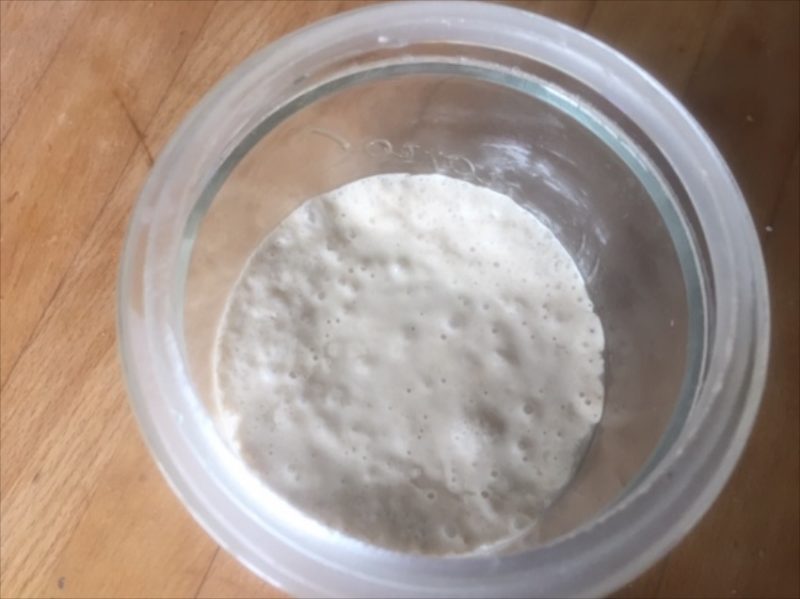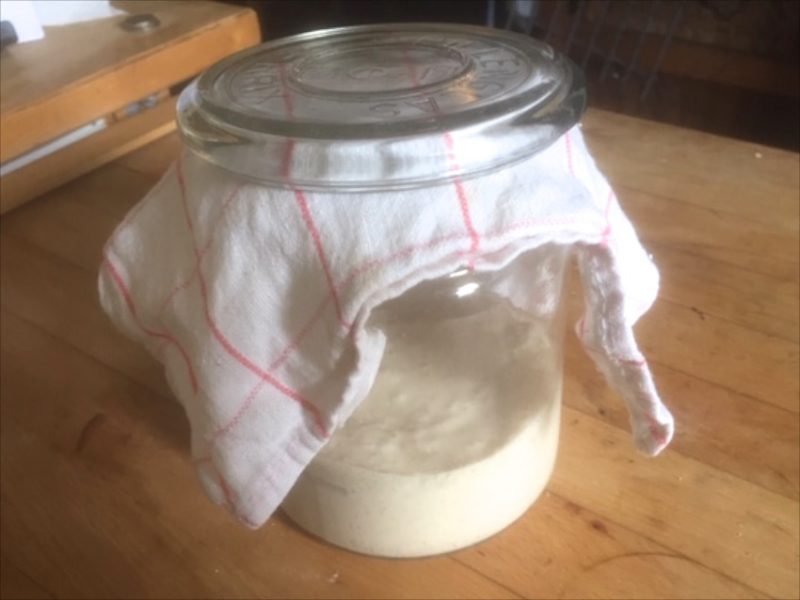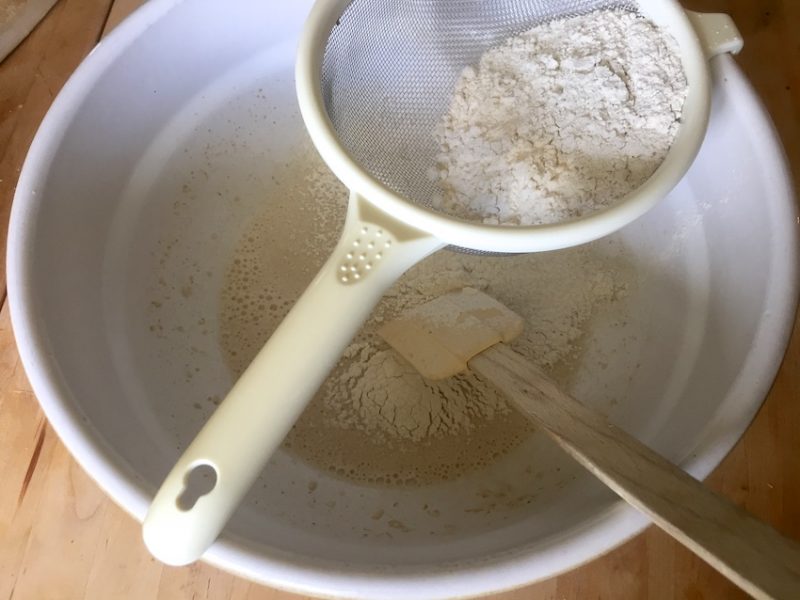Words Lisa Valder Photographs Lisa Valder
It is coming up to 12 weeks in lockdown. I have been self isolating with my three adult children plus partners in our rural home, with shops not easily accessible. Feeding a household of six adults, while having to rely on supermarket deliveries, with some foods still in short supply, can be a challenge. A loaf of bread hardly lasts a day.
Since I am unable to do much work from home, it is a rare luxury that I have plenty of time on my hands. So, like many others (judging from the temporary flour shortage in supermarkets), I decided to practise baking bread, in particular sourdough bread.
Making sourdough bread from scratch is quite time consuming and slightly tricky, but it is also hugely rewarding. Being German, I also have a great fondness for rye bread, so I set myself the task to master a successful homemade sourdough rye bread.

Crusty sourdough rye bread baked in an earthenware dish
I particularly love the challenge of not having to rely on shop-bought yeast. Making your own sourdough starter is like a fun chemistry experiment at school. It is so exciting to see the ingredients of flour and water turn into a fermenting, fragrant, bubbly mix over the course of a few days of preparation. So, if like me you are not too busy with work or young children, and enjoy baking and tasting a fresh loaf of homemade bread, please read on.

Day 5 of making your sourdough starter
How to make a sourdough starter
Day 1: Start with 50g of flour and 50g of tepid water in a jar or plastic container. It’s best to use strong white bread flour. Mix well and leave half covered, or covered with a cloth for 24 hours at room temperature.
Day 2: Add an extra 50g of flour and water to the mix and leave for 24 hours.
Day 3 and 4: Repeat as above. By Day 4 you should start seeing some activity in the mixture with some bubbles forming.
Day 5: Your sourdough starter is ready. Close the jar with a tight lid, and store in the fridge, where it will stay ‘dormant’ until you use it.

During the making of your sourdough starter keep the jar loosely covered and at room temperature
Your sourdough starter will keep in the fridge, but you’ll need to look after it if you want to carry on using it. Once a week you need to feed your sourdough starter to keep it active. Just tip half of it out and replenish with equal measures of flour and water (around 80g of each). Some people give their sourdough starter a name, but that’s optional!

On the day of making your dough you first make a ‘leaven’
My light rye bread recipe (makes two loaves, halve ingredients for one loaf)
Mix 80g of your sourdough starter from the fridge with 60g water and 60g flour in a large bowl to make the ‘leaven’, sometimes also called the ‘mother of dough’. The leaven will be the active starter for your dough. Cover the bowl loosely with a tea towel or lid, and leave for two to four hours at room temperature.
To make the dough add:
300g of rye flour
700g of strong white flour
28g salt
750g water
Mix all ingredients together and knead on a floured surface for approximately ten minutes.

Sourdough is by nature quite sticky. Use plenty of flour on your surface when kneading.
Leave the dough to rest, loosely covered with a tea towel or oiled cling film for one hour. Repeat knead, stretch and fold one to two more times at 30-minute intervals. Divide your dough into two equal parts, and put into two slightly oiled bowls, cover, and keep it in the fridge overnight.
On the day of baking, preheat your oven to 200C. You can use an earthenware, enamel or baking dish, preferably with a lid, which will need to be preheated in the oven. You can also use a standard bread tin. Once the dish is hot, sprinkle the base of the dish with flour, take the dough from the fridge and tip it into the dish, cut a cross or diagonal slashes into the top, and sprinkle the top of the dough with some extra flour. Bake the loaf in the oven for approx 35 – 45 minutes or until golden brown and crusty. If you use a dish with a lid, take the lid off halfway through baking. It is also recommended that you put a small dish with water in the oven, to keep the heat in the oven moist.
It took me quite a few attempts to make the loaf look good and have a perfect crispy crust and soft elastic texture, but even slightly wonky and imperfect earlier versions tasted very good (so I’m told), so don’t give up, practice makes perfect!
Also, if you prefer using different flour (ie wholemeal or white wheat, spelt etc), you can substitute.

These two loaves were made with wholemeal wheat flour
Your sourdough loaf tastes particularly good fresh out of the oven and still warm, but it also keeps remarkably well.
Local suppliers of good flour
Unless you want to buy flour in industrial quantities online (like I did when there was none available in the supermarkets), you will find good quality wheat, rye and spelt flour locally at Macknade Fine Foods, Wild Bread Bakehouse or Sondes Tea House and General Store. The big supermarkets may also stock some more unusual flours.
Good luck, and stay safe and well!